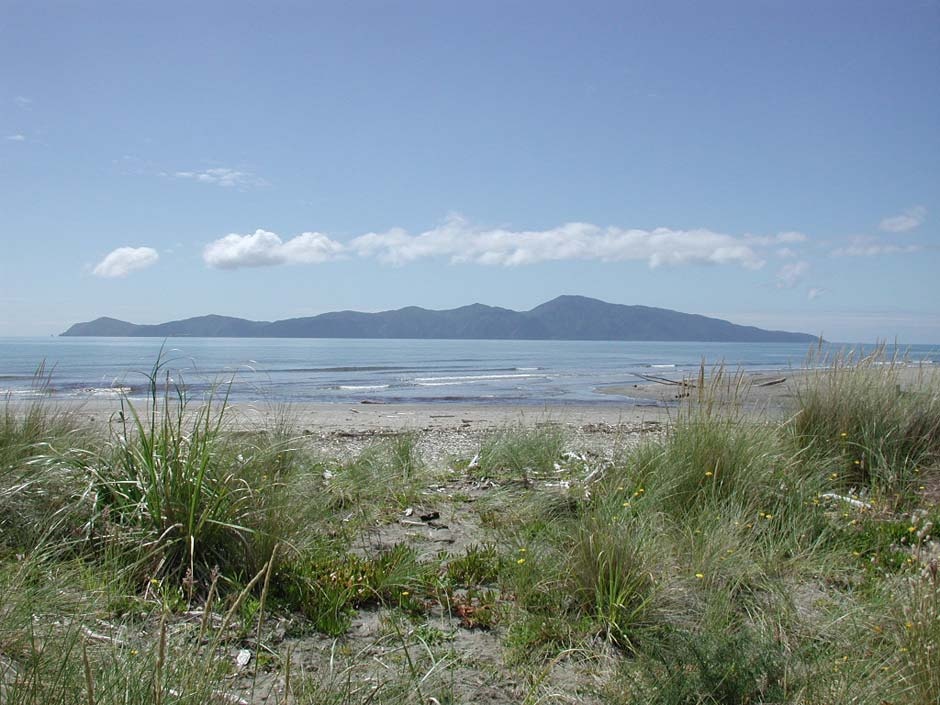
Te Kahe Te Rau O Te Rangi, Kāpiti Island (1830)
A bicultural whaling village
Pre-1840 New Zealand attracted a polyglot mix of adventurers and entrepreneurs, the sealers, whalers, stowaways and their Maori agents forming what historical geographer Alan Grey called a ‘robber economy’. The early industries, sex excluded, were extractive: flax, timber, seals and most important of all, whales. Pelagic or ocean whalers entered the Bay of Islands from the early 1800s. Shore whaling began 20 years later and mostly happened further south, around Cook Strait and the along the east coast of the South Island.
These European ships drew Ngāti Toa chief Te Rauparaha to Kāpiti Island. His tribe had fared badly in the Musket Wars but Te Rauparaha was very intelligent and adaptable, a true cultural border-crosser. He knew that the European ships passing through Cook Strait were the key to getting trade goods such as guns. In 1823 Ngāti Toa seized Kāpiti Island, which they defended next year in the bloody Battle of Waiorua. Kāpiti, centre of a canoe-crafted empire, gave Te Rauparaha both a fortress and a trading base.
Vessels began calling in 1827 and, by the time the trade peaked in the mid-1830s, there were five whaling stations on the island: Waiorua, Rangatira, Taepiro, Wharekohu and Te Kahe Te Rau O Te Rangi. Te Rauparaha encouraged traders and whalers, providing land, houses, pigs, potatoes, dressed flax and women in return for guns, tobacco and alcohol. Island historian Chris Maclean describes 1830s Kapiti as ‘a wild frontier, a meeting point of two cultures without the restraints of laws or government’ but, despite occasional acts of thuggery, two cultures united in greed got along surprisingly well. Europeans and Māori lived side by side and trader and whaler John Niccol followed age-old practice by marrying into the local real estate, wedding Kahe Te Rau O Te Rangi, daughter of Ngāti Toa chief Te Matoha.
The whaling trade faded away in the 1840s and Te Rauparaha, his influence waning, moved back to the mainland. Whalers and Te Rauparaha are just part of Kāpiti’s history. It has also been a farm and a pioneering site for conservation. The government acquired most of it in 1897 and Richard Henry, whom we will meet in entry 69, was one of the earliest keepers. Now predator-free, Kāpiti is an important bird sanctuary. Nature is reclaiming the village site, but boats take visitors out to Kāpiti and at Te Kahe Te Rau O Te Rangi you can still see terraces, a stand for a trypot (in which whale blubber was rendered down) and the grave of a whaler, as well as Māori middens.
Further information
This site is item number 12 on the History of New Zealand in 100 Places list.
On the ground
There are trails, signboards and plenty of artefacts to see. Visitor numbers are restricted, so plan your trip in advance.
Website
- Department of Conservation
- Te Rauparaha biography – Te Ara
- Kāpiti and Mana Islands – Te Ara
- 1966 Encyclopaedia
- Roadside Story (video)
Book
- Chris Maclean, Kapiti, Whitcombe Press, Wellington, 1999





Community contributions